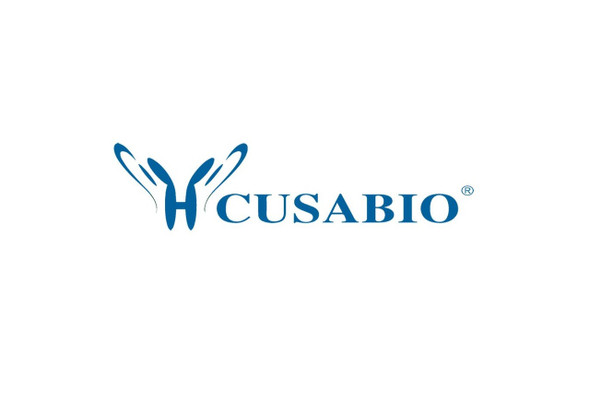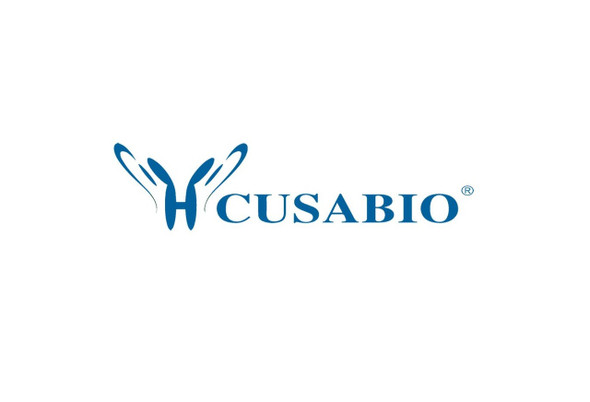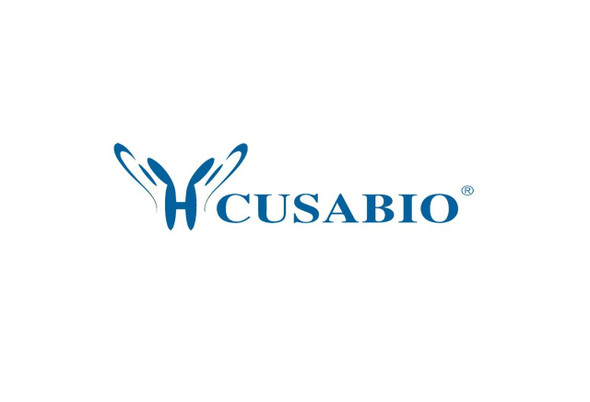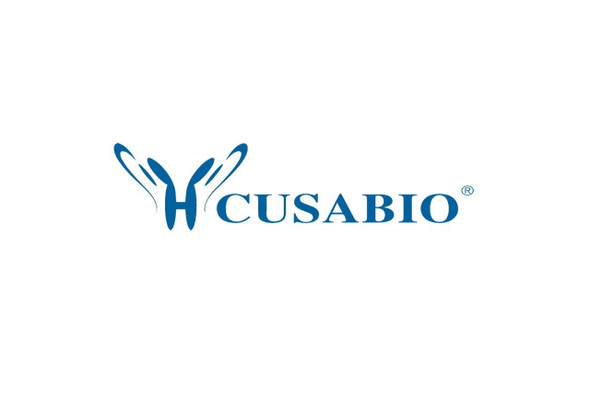Cusabio Human Recombinants
Recombinant Human Potassium voltage-gated channel subfamily D member 2 (KCND2), partial | CSB-YP012023HU
- SKU:
- CSB-YP012023HU
- Availability:
- 25 - 35 Working Days
Description
Recombinant Human Potassium voltage-gated channel subfamily D member 2 (KCND2), partial | CSB-YP012023HU | Cusabio
Alternative Name(s): Voltage-gated potassium channel subunit Kv4.2
Gene Names: KCND2
Research Areas: Transport
Organism: Homo sapiens (Human)
AA Sequence: VSNFSRIYHQNQRADKRRAQKKARLARIRAAKSGSANAYMQSKRNGLLSNQLQSSEDEQAFVSKSGSSFETQHHHLLHCLEKTTNHEFVDEQVFEESCMEVATVNRPSSHSPSLSSQQGVTSTCCSRRHKKTFRIPNANVSGSHQGSIQELSTIQIRCVERTPLSNSRSSLNAKMEECVKLNCEQPYVTTAIISIPTPPVTTPEGDDRPESPEYSGGNIVRVSAL
Source: Yeast
Tag Info: N-terminal 6xHis-tagged
Expression Region: 406-630aa
Sequence Info: Partial
MW: 27 kDa
Purity: Greater than 90% as determined by SDS-PAGE.
Relevance: Voltage-gated potassium channel that mediates transmbrane potassium transport in excitable mbranes, primarily in the brain. Mediates the major part of the dendritic A-type current I(SA) in brain neurons . This current is activated at mbrane potentials that are below the threshold for action potentials. It regulates neuronal excitability, prolongs the latency before the first spike in a series of action potentials, regulates the frequency of repetitive action potential firing, shortens the duration of action potentials and regulates the back-propagation of action potentials from the neuronal cell body to the dendrites. Contributes to the regulation of the circadian rhytm of action potential firing in suprachiasmatic nucleus neurons, which regulates the circadian rhythm of locomotor activity . Functions downstream of the metabotropic glutamate receptor GRM5 and plays a role in neuronal excitability and in nociception mediated by activation of GRM5 . Mediates the transient outward current I(to) in rodent heart left ventricle apex cells, but not in human heart, where this current is mediated by another family mber. Forms tetrameric potassium-selective channels through which potassium ions pass in accordance with their electrochical gradient . The channel alternates between opened and closed conformations in response to the voltage difference across the mbrane . Can form functional homotetrameric channels and heterotetrameric channels that contain variable proportions of KCND2 and KCND3; channel properties depend on the type of pore-forming alpha subunits that are part of the channel. In vivo, mbranes probably contain a mixture of heteromeric potassium channel complexes. Interaction with specific isoforms of the regulatory subunits KCNIP1, KCNIP2, KCNIP3 or KCNIP4 strongly increases expression at the cell surface and thereby increases channel activity; it modulates the kinetics of channel activation and inactivation, shifts the threshold for channel activation to more negative voltage values, shifts the threshold for inactivation to less negative voltages and accelerates recovery after inactivation . Likewise, interaction with DPP6 or DPP10 promotes expression at the cell mbrane and regulates both channel characteristics and activity .
Reference: The DNA sequence of human chromosome 7.Hillier L.W., Fulton R.S., Fulton L.A., Graves T.A., Pepin K.H., Wagner-McPherson C., Layman D., Maas J., Jaeger S., Walker R., Wylie K., Sekhon M., Becker M.C., O'Laughlin M.D., Schaller M.E., Fewell G.A., Delehaunty K.D., Miner T.L. , Nash W.E., Cordes M., Du H., Sun H., Edwards J., Bradshaw-Cordum H., Ali J., Andrews S., Isak A., Vanbrunt A., Nguyen C., Du F., Lamar B., Courtney L., Kalicki J., Ozersky P., Bielicki L., Scott K., Holmes A., Harkins R., Harris A., Strong C.M., Hou S., Tomlinson C., Dauphin-Kohlberg S., Kozlowicz-Reilly A., Leonard S., Rohlfing T., Rock S.M., Tin-Wollam A.-M., Abbott A., Minx P., Maupin R., Strowmatt C., Latreille P., Miller N., Johnson D., Murray J., Woessner J.P., Wendl M.C., Yang S.-P., Schultz B.R., Wallis J.W., Spieth J., Bieri T.A., Nelson J.O., Berkowicz N., Wohldmann P.E., Cook L.L., Hickenbotham M.T., Eldred J., Williams D., Bedell J.A., Mardis E.R., Clifton S.W., Chissoe S.L., Marra M.A., Raymond C., Haugen E., Gillett W., Zhou Y., James R., Phelps K., Iadanoto S., Bubb K., Simms E., Levy R., Clendenning J., Kaul R., Kent W.J., Furey T.S., Baertsch R.A., Brent M.R., Keibler E., Flicek P., Bork P., Suyama M., Bailey J.A., Portnoy M.E., Torrents D., Chinwalla A.T., Gish W.R., Eddy S.R., McPherson J.D., Olson M.V., Eichler E.E., Green E.D., Waterston R.H., Wilson R.K.Nature 424:157-164(2003)
Storage: The shelf life is related to many factors, storage state, buffer ingredients, storage temperature and the stability of the protein itself. Generally, the shelf life of liquid form is 6 months at -20?/-80?. The shelf life of lyophilized form is 12 months at -20?/-80?.
Notes: Repeated freezing and thawing is not recommended. Store working aliquots at 4? for up to one week.
Function: Voltage-gated potassium channel that mediates transmembrane potassium transport in excitable membranes, primarily in the brain. Mediates the major part of the dendritic A-type current I(SA) in brain neurons (By similarity). This current is activated at membrane potentials that are below the threshold for action potentials. It regulates neuronal excitability, prolongs the latency before the first spike in a series of action potentials, regulates the frequency of repetitive action potential firing, shortens the duration of action potentials and regulates the back-propagation of action potentials from the neuronal cell body to the dendrites. Contributes to the regulation of the circadian rhythm of action potential firing in suprachiasmatic nucleus neurons, which regulates the circadian rhythm of locomotor activity (By similarity). Functions downstream of the metabotropic glutamate receptor GRM5 and plays a role in neuronal excitability and in nociception mediated by activation of GRM5 (By similarity). Mediates the transient outward current I(to) in rodent heart left ventricle apex cells, but not in human heart, where this current is mediated by another family member. Forms tetrameric potassium-selective channels through which potassium ions pass in accordance with their electrochemical gradient
Involvement in disease: KNCD2 mutations have been found in a family with autism and epilepsy and may play a role in disease pathogenesis. Autism is a complex multifactorial, pervasive developmental disorder characterized by impairments in reciprocal social interaction and communication, restricted and stereotyped patterns of interests and activities, and the presence of developmental abnormalities by 3 years of age. Epilepsy is characterized by paroxysmal transient disturbances of the electrical activity of the brain that may be manifested as episodic impairment or loss of consciousness, abnormal motor phenomena, psychic or sensory disturbances, or perturbation of the autonomic nervous system.
Subcellular Location: Cell membrane, Multi-pass membrane protein, Cell projection, dendrite, Cell junction, synapse, Perikaryon, Cell junction, synapse, postsynaptic cell membrane, Cell projection, dendritic spine, Cell junction
Protein Families: Potassium channel family, D (Shal) (TC 1.A.1.2) subfamily, Kv4.2/KCND2 sub-subfamily
Tissue Specificity: Detected in ovary, in corpus luteum and in granulosa and theca cells in the follicle (at protein level) (PubMed:15991246). Highly expressed throughout the brain (PubMed:10551270, PubMed:10729221). Detected in amygdala, caudate nucleus, cerebellum, hippocampus, substantia nigra and thalamus (PubMed:10551270, PubMed:10729221). Expression is not detectable or very low in heart, kidney, liver, lung, pancreas and skeletal muscle (PubMed:10551270, PubMed:10729221). Not detectable in human heart atrium (PubMed:12395204).
Paythway:
Form: Liquid or Lyophilized powder
Buffer: If the delivery form is liquid, the default storage buffer is Tris/PBS-based buffer, 5%-50% glycerol. If the delivery form is lyophilized powder, the buffer before lyophilization is Tris/PBS-based buffer, 6% Trehalose, pH 8.0.
Reconstitution: We recommend that this vial be briefly centrifuged prior to opening to bring the contents to the bottom. Please reconstitute protein in deionized sterile water to a concentration of 0.1-1.0 mg/mL.We recommend to add 5-50% of glycerol (final concentration) and aliquot for long-term storage at -20?/-80?. Our default final concentration of glycerol is 50%. Customers could use it as reference.
Uniprot ID: Q9NZV8
HGNC Database Link: HGNC
UniGene Database Link: UniGene
KEGG Database Link: KEGG
STRING Database Link: STRING
OMIM Database Link: OMIM









